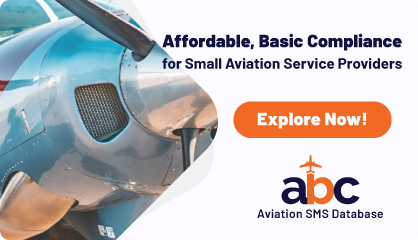Concepts of Risk Management Pillar

Aviation safety managers globally rely on robust Safety Management Systems (SMS) to mitigate risks and ensure operational integrity. Central to the SMS framework are the four pillars: Safety Policy, Safety Risk Management, Safety Assurance, and Safety Promotion.
Among these, the Safety Risk Management (SRM) pillar stands out as the backbone of proactive hazard identification and risk mitigation.
This article delves into the most critical SMS concepts within the Risk Management pillar, offering actionable insights for aviation safety managers to enhance safety protocols and maintain compliance with international standards like those set by the International Civil Aviation Organization (ICAO).
Understanding the Safety Risk Management Pillar in Aviation SMS
Safety Risk Management (SRM) is the systematic process of identifying hazards, assessing risks, and implementing controls to mitigate those risks within aviation operations. As defined by ICAO in Annex 19, SRM involves a structured approach to managing safety risks to an acceptable level. For aviation safety managers, mastering SRM concepts is essential to prevent incidents, ensure regulatory compliance, and foster a culture of safety.
Related Aviation Safety Manager Articles
- What Makes a Good Aviation Safety Manager?
- Career Advice for Aspiring Safety Managers
- How to Tell If Aviation Safety Manager Is Doing Their Job
The SRM pillar encompasses several key processes:
- Hazard Identification
- Risk Assessment
- Risk Mitigation and Control
- Continuous Monitoring and Review
Each of these processes plays a pivotal role in creating a resilient safety framework. Let’s explore these concepts in detail, highlighting their importance and practical applications for aviation safety managers.
1. Hazard Identification: The Foundation of SRM

Hazard identification is the first step in the SRM process. A hazard is any condition, object, or activity with the potential to cause harm, such as equipment failure, human error, or adverse weather conditions. Effective hazard identification requires a proactive and systematic approach to uncover potential risks before they escalate into incidents.
Key Concepts in Hazard Identification
- Proactive vs. Reactive Identification: Proactive hazard identification involves anticipating risks through tools like safety audits, employee reporting systems, and trend analysis. Reactive identification, on the other hand, relies on analyzing past incidents or near-misses to identify recurring hazards. A balanced approach combining both methods is critical for comprehensive risk management.
- Data-Driven Insights: Leveraging data from flight data monitoring systems, safety reports, and maintenance logs enables safety managers to identify patterns and emerging hazards. For example, analyzing flight data may reveal recurring issues with specific aircraft systems, prompting preemptive maintenance.
- Employee Engagement: Frontline employees, such as pilots, cabin crew, and ground staff, are often the first to encounter hazards. Encouraging a non-punitive reporting culture ensures that potential risks are reported promptly. Tools like confidential safety reporting systems (e.g., SMS Pro's Safety Reporting System) empower employees to contribute to hazard identification.
Practical Tips for Aviation Safety Managers
- Implement regular safety audits and inspections to identify operational hazards.
- Use digital tools like SMS Pro software to centralize and analyze safety reports.
- Foster an open reporting culture by training staff on the importance of hazard reporting and ensuring anonymity when needed.
By prioritizing hazard identification, safety managers lay the groundwork for effective risk assessment and mitigation, reducing the likelihood of safety incidents.
Related Articles on Aviation Risk Management
- Difference Between Reactive, Predictive and Proactive Risk Management in Aviation SMS
- From Reactive to Proactive Risk Management in Aviation SMS
- How to Practice Reactive, Proactive, and Predictive Risk Management in Your SMS
2. Risk Assessment: Quantifying and Prioritizing Risks
Once hazards are identified, the next step is risk assessment. This process involves evaluating the probability and severity of potential outcomes associated with each hazard. Risk assessment transforms raw hazard data into actionable insights, enabling safety managers to prioritize risks and allocate resources effectively.
Key Concepts in Risk Assessment
- Risk Matrix: A risk matrix is a widely used tool in aviation SMS to assess risks based on two dimensions: likelihood (how probable the hazard is to occur) and severity (the potential impact of the hazard). For example, a high-likelihood, high-severity risk, such as a runway incursion, demands immediate attention, while a low-likelihood, low-severity risk may require monitoring.
- ALARP Principle: The “As Low As Reasonably Practicable” (ALARP) principle guides risk assessment by ensuring that risks are reduced to an acceptable level without disproportionate cost or effort. Safety managers must balance safety improvements with operational feasibility.
- Qualitative vs. Quantitative Assessment: Qualitative assessments rely on expert judgment and descriptive scales (e.g., low, medium, high), while quantitative assessments use numerical data, such as statistical probabilities or cost estimates. Combining both approaches enhances the accuracy of risk prioritization.
Practical Tips for Aviation Safety Managers
- Develop a standardized risk matrix tailored to your organization’s operations, ensuring consistency in risk evaluations.
- Train safety teams on risk assessment methodologies, including the use of ICAO’s risk assessment guidelines.
- Regularly review risk assessments to account for changes in operations, regulations, or environmental factors.
Effective risk assessment empowers safety managers to focus on high-priority risks, optimizing resource allocation and enhancing operational safety.
Related Risk Matrix Articles for Aviation SMS
- What Is a Risk Matrix and Risk Assessment in Aviation SMS
- How to Create Your Risk Matrix for Risk Assessments in Aviation SMS
- 5 Questions to Ask Before Making Risk Assessment
3. Risk Mitigation and Control: Turning Insights Into Action
Risk mitigation involves designing and implementing control measures to reduce the likelihood or severity of identified risks. These controls can be preventive (reducing the chance of occurrence) or corrective (minimizing the impact after occurrence). The goal is to ensure that risks remain within acceptable levels, as defined by the ALARP principle.
Key Concepts in Risk Mitigation
- Hierarchy of Controls: The hierarchy of controls prioritizes risk mitigation strategies based on effectiveness:
- Elimination: Remove the hazard entirely (e.g., replacing faulty equipment).
- Substitution: Replace the hazard with a safer alternative (e.g., using less hazardous materials).
- Engineering Controls: Implement physical or technological solutions (e.g., installing collision avoidance systems).
- Administrative Controls: Establish policies or training programs (e.g., mandatory safety briefings).
- Personal Protective Equipment (PPE): Provide protective gear as a last resort (e.g., high-visibility vests for ground crew).
- Bowtie Model: The bowtie model is a visual tool used in aviation to map hazards, their potential consequences, and the controls in place to prevent or mitigate them. It helps safety managers visualize the relationship between hazards, controls, and outcomes.
- Cost-Benefit Analysis: When selecting mitigation measures, safety managers must weigh the costs of implementation against the potential benefits in terms of risk reduction. For example, investing in advanced weather monitoring systems may be justified by the reduced risk of weather-related incidents.
Practical Tips for Aviation Safety Managers
- Use the bowtie model to communicate risk mitigation strategies to stakeholders, ensuring clarity and alignment.
- Regularly evaluate the effectiveness of controls through safety performance indicators (SPIs), such as the frequency of near-misses.
- Collaborate with other departments, such as maintenance and operations, to implement cross-functional risk controls.
By implementing robust mitigation strategies, safety managers can minimize risks and enhance the overall safety of aviation operations.
4. Continuous Monitoring and Review: Ensuring Long-Term Safety

Risk management is not a one-time activity; it requires continuous monitoring and review to adapt to changing conditions. This process ensures that hazards are re-evaluated, risk assessments are updated, and mitigation measures remain effective over time.
Key Concepts in Continuous Monitoring
- Safety Performance Indicators (SPIs): SPIs, also known as KPIs, are measurable metrics used to track the effectiveness of SMS processes. Examples include the number of safety reports submitted, the rate of incidents, or the percentage of completed safety audits.
- Feedback Loops: Continuous improvement relies on feedback from safety audits, incident investigations, and employee reports. Feedback loops enable safety managers to identify gaps in the SRM process and implement corrective actions.
- Change Management: Changes in operations, such as new routes, fleet additions, or regulatory updates, can introduce new hazards. A robust change management process ensures that SRM adapts to these changes proactively.
Practical Tips for Aviation Safety Managers
- Establish a dashboard to track SPIs in real-time, enabling quick identification of safety trends.
- Conduct periodic SMS reviews to assess the effectiveness of SRM processes and identify areas for improvement.
- Integrate SRM into change management protocols, ensuring that safety risks are evaluated before implementing operational changes.
Continuous monitoring ensures that SRM remains dynamic and responsive, maintaining safety in an ever-evolving aviation environment.
Related Articles on Continuous Improvement for Aviation SMS
- FAA Part 5 Compliance | Safety Assurance Continuous Improvement
- What Continuous Improvement Compliance Looks Like in Real SMS
- How to Be Compliant With Continuous Improvement of SMS
Integrating SRM Into Your Aviation SMS
For aviation safety managers, integrating SRM into the broader SMS framework requires a strategic approach. Here are some best practices to ensure success:
- Align with ICAO Standards: Ensure that SRM processes comply with ICAO Annex 19 and local regulatory requirements. Regular audits and gap analyses can help maintain compliance.
- Leverage Technology: SMS software platforms, such as SMS Pro and ABC, streamline hazard identification, risk assessment, and monitoring processes. These tools provide real-time insights and improve collaboration across teams.
- Build a Safety Culture: SRM is most effective when supported by a strong safety culture. Encourage open communication, reward proactive hazard reporting, and provide regular training to reinforce SRM concepts.
- Collaborate Across Departments: SRM is a cross-functional effort. Engage operations, maintenance, and human resources teams to ensure a holistic approach to risk management.
Conclusion: Empowering Aviation Safety Through SRM
The Safety Risk Management pillar is the cornerstone of a robust aviation SMS, enabling safety managers to proactively identify, assess, and mitigate risks. By mastering hazard identification, risk assessment, mitigation, and continuous monitoring, aviation safety managers can safeguard operations, protect lives, and maintain compliance with global standards. As the aviation industry continues to evolve, a strong SRM framework ensures that safety remains at the forefront of every decision.
For global aviation safety managers, the journey to safety excellence begins with a commitment to SRM. By implementing the concepts and best practices outlined in this article, you can build a resilient safety framework that stands the test of time. Stay proactive, leverage data, and foster a culture of safety to keep your operations soaring safely.
If you need cost-effective tools with a high value proposition, SMS Pro can help.








